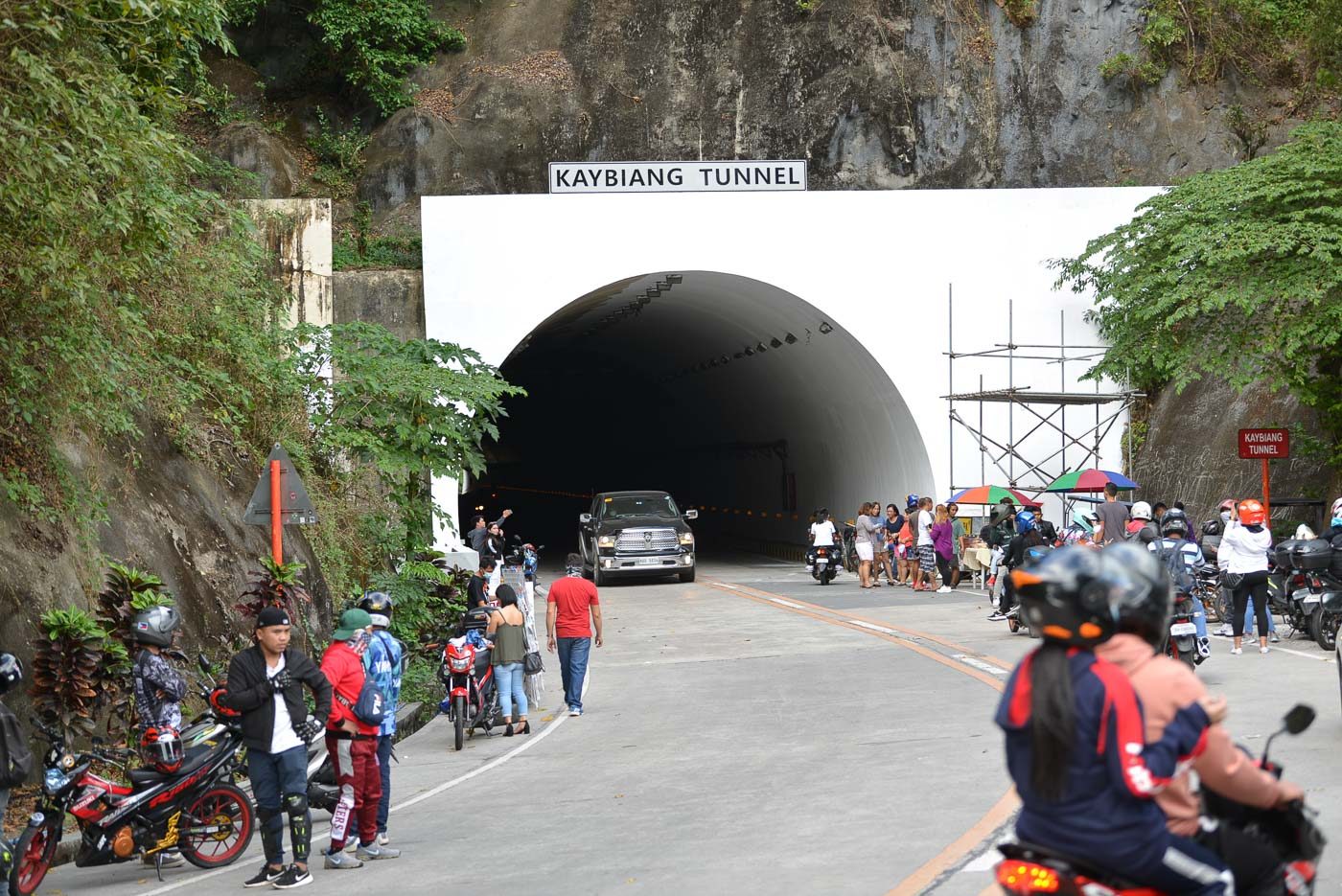SUMMARY
This is AI generated summarization, which may have errors. For context, always refer to the full article.

Cavite Governor Jonvic Remulla has banned the convergence of local tourists in Kaybiang Tunnel for safety reasons.
Starting Friday, March 19, Kaybiang Tunnel will become a “No Tourism Zone,” Remulla announced in a Facebook post on Wednesday, March 17.
The governor said that he made the decision after receiving numerous reports that people massed in the area caused “nonstop traffic and bottleneck from the entrance to the exit of the tunnel.” He said people also left their garbage there.
“Marami ang nagreport sa aking tanggapan na ang Kaybiang Tunnel sa Mount Pico de Loro ay nagiging sanhi ng traffic, basura, at umabot pa sa mga lokal na turista ang sila silang nagba-bardagulan doon,” he said.
(Many have reported to my office that [people converging at] Kaybiang Tunnel in Mount Pico de Loro caused traffic, garbage, and even brawls among local tourists.)
He noted that “thousands” of cyclists, motorcylists, and car owners stop in the area to eat, enjoy te scenery, and take selfies and photos.
Under Remulla’s order, the following are prohibited starting March 19:
- No parking in the vicinity of Kaybiang Tunnel
- Cyclists can’t use the tunnel for leisure purposes
- No eating in the vicinity of the tunnel
- No selfies in the vicinity of the tunnel
- No loitering in the vicinity of the tunnel
- No honking inside the tunnel
Last weekend, a video showing a brawl between riders within the area went viral on social media.
With that, Remulla said, an executive order will be released regarding Kaybiang Tunnel regulations.
“Hindi ko naman kagustuhan ang basagan ng trip. Ngunit responsibilidad ko din na siguraduhin na maayos ang counterflow ng traffic at maintenance ng law and order sa ating mga lansangan,” Remulla added.
To ensure the implementation of the new policy declaring the tunnel as a “No Tourism Zone,” police checkpoints will be placed in the towns of Tanza, Naic, Maragondon, and Ternate.
Remulla said in another Facebook post on Thursday, March 18, that Patungan Beach and Patungan Munti are included in the Restricted Zone, as they have no sanitary facilities, no lifeguards on duty, no parking areas, and establishments there have no business permits.
The Kaybiang Tunnel became popular among motorcycle riders and cyclists in 2020. The average number of 200 tourists per weekend rose to 2,500 tourists per weekend.
Motorcycle riders and cyclists frequently take the road (Ternate-Nasugbu highway) leading to the tunnel because of its smooth surface, picturesque scenery, tempting winding roads, and close proximity to Metro Manila.
The Ternate-Nasugbu highway allows motorcycles of any size to travel on it. As such, it has become one of the favorite ride routes of motorcycle riders and groups.
The Kaybiang Tunnel, which was opened to the public in 2013, is a 300-meter tunnel that connects the provinces of Cavite and Batangas through the Southern Tagalog’s west side, facing the West Philippine Sea. It is currently the Philippines’ longest underground highway tunnel. – Rappler.com
Add a comment
How does this make you feel?
There are no comments yet. Add your comment to start the conversation.